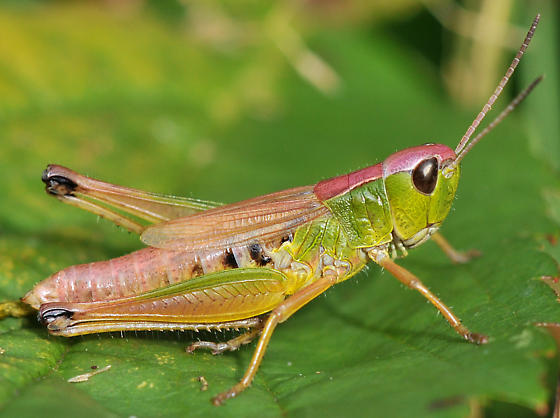I’d like to congratulate my REU from last summer, Maddi Rode, whose paper “Prospective evidence for independent nitrogen and phosphorus limitation of grasshopper (Chorthippus curtipennis) growth in a tallgrass prairie” was just published in PLOS One!
Nitrogen, a critical component of amino acids and proteins, has long been considered the primary limiting nutrient of terrestrial insects. Other nutrients have generally received much less attentions. However, phosphorus is a crucial component of larval growth, given the tight coupling between phosphorus-rich RNA and growth rates. Indeed, the strength of phosphorus limitation in terrestrial insects is often just as strong as nitrogen limitation. However, few studies have enriched plants with both nitrogen and phosphorus (separately and together) to determine the relative strengths of nutrient limitation.
Maddi spent the summer at Konza Prairie Biological Station doing just that. She enriched plots of Andropogon gerardii, or big bluestem, with nitrogen, phosphorus, or a combination of the two. We then tracked the growth of the marsh meadow grasshopper, Chorthippus curtipennis, under all conditions.

She found that nitrogen enrichment led to higher grasshopper growth rates. Surprisingly (or unsurprisingly to us), phosphorus enrichment stimulated grasshopper growth by nearly the exact same amount as nitrogen enrichment.
This work adds to the building body of literature that grasshoppers, and indeed most terrestrial insects, are limited by a suite of nutrients beyond simply phosphorus. What this means for herbivore feeding behavior and climate change remains to be seen…